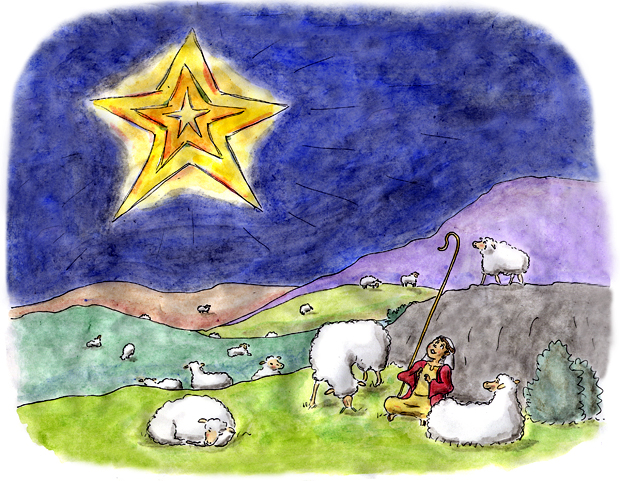PAGEANTS AND OTHER TRADITIONS OF THE SEASON
Festival of Light

Because of the bright star which led the Magi to the Holy Child, Epiphany also became a festival of light.
This was especially evident in the huge bonfires in the center of each village as everyone brought Christmas trees to be burned on Epiphany Day, singing,
Farewell to thee, O Christmas tree!Remnants of this tradition endure in places that still have a Christmas-tree-burning on Epiphany; when my children were little, they looked forward to "the beautiful fire" at the town dump as part of our Epiphany celebration.
Thy part is done
And thy gifts are gone,
And thy lights are dying one by one.
Good-bye to the tree
Good fortune was said to come to those who kept their Christmas greens until Epiphany. One European tradition connected to this belief was called "Plundering the Tree." On Epiphany, villagers would go from house to house and dance around their neighbors' trees, then eat the last of the Christmas treats. The hostess would have taken the ornaments off the tree and set them in piles around the room, and each guest would choose a pile to take home to use next year; in this way, Christmas decorations circulated among the whole village year by year. At the end of the evening, all the plundered trees were taken to the center of town and burned.
Plays and parties
Although the visit of the Magi on Epiphany was celebrated with a certain solemnity during the Middle Ages, it became an occasion for wanton frivolity during the reign of Queen Elizabeth I—so outrageous, in fact, were the antics presided over by the Lord of Misrule that the Puritans rejected not only Epiphany but Christmas as well because the whole holiday season seemed to have lost religious significance and become an excuse to party. Epiphany was celebrated at court with jesters, jugglers, music, storytelling and plays. In France, the performer who received the most applause was clothed in a scarlet robe and crowned as King, reigning over the evening's festivities. Performances of one sort or another remain part of the Epiphany tradition even into more recent years. "We Three Kings," the well-known Epiphany carol, was actually written as part of a pageant at General Theological Seminary in New York City.
For further information, see Epiphany Legends, Art, and Background.